Prehistory
Sweden's prehistory begins in the Allerød oscillation, a warm period around 12,000 BC, with Late Palaeolithic reindeer-hunting camps of the Bromme culture at the edge of the ice in what is now the country's southernmost province, Scania. This period was characterised by small bands of hunter-gatherer-fishers using flint technology. Sweden is first described in a written source in Germania by Tacitus in 98 AD. In Germania 44 and 45 he mentions the Swedes (Suiones) as a powerful tribe (distinguished not merely for their arms and men, but for their powerful fleets) with ships that had a prow at each end (longships). Which kings (kuningaz) ruled these Suiones is unknown, but Norse mythology presents a long line of legendary and semi-legendary kings going back to the last centuries BC. As for literacy in Sweden itself, the runic script was in use among the south Scandinavian elite by at least the 2nd century AD, but all that has come down to the present from the Roman Period is curt inscriptions on artefacts, mainly of male names, demonstrating that the people of south Scandinavia spoke Proto-Norse at the time, a language ancestral to Swedish and other North Germanic languages. In the 6th century Jordanes named two tribes he calls the Suehans and the Suetidi who lived in Scandza. These two names are both considered to refer to the same tribe. The Suehans, he says, have very fine horses just as the Thyringi tribe (alia vero gens ibi moratur Suehans, quae velud Thyringi equis utuntur eximiis). Snorri Sturluson wrote that the contemporary Swedish king Adils (Eadgils) had the finest horses of his day. The Suehans were the suppliers of black fox skins for the Roman market. Then Jordanes names the Suetidi, which is considered to be the Latin form of Svíþjóð, the Old Norse name for the Swedes. He writes that the Suetidi are the tallest of men together with the Dani who were of the same stock. Later he mentions other Scandinavian tribes for being of the same height.
The Vikings
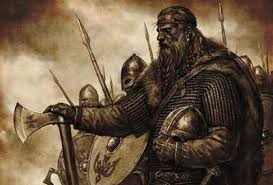
The Swedish Viking Age lasted roughly from the 8th century to the 11th century. It is believed that Swedish Vikings and Gutar mainly travelled east and south, going to Finland, the Baltic countries, Russia, Belarus, Ukraine, the Black Sea and even as far as Baghdad. Their routes passed through the Dnieper south to Constantinople, on which they carried out numerous raids. The Byzantine EmperorTheophilos noticed their great skills in war, and invited them to serve as his personal bodyguard, known as the Varangian Guard. The Swedish Vikings, called Rus are believed to be the founding fathers of Kievan Rus'. The Arab traveler Ibn Fadlan described these Vikings as follows: I have seen the Rus as they came on their merchant journeys and encamped by the Itil. I have never seen more perfect physical specimens, tall as date palms, blond and ruddy; they wear neither tunics nor caftans, but the men wear a garment which covers one side of the body and leaves a hand free. Each man has an axe, a sword, and a knife, and keeps each by him at all times. The swords are broad and grooved, of Frankish sort. The actions of these Swedish Vikings are commemorated on many runestones in Sweden, such as the Greece runestones and the Varangian runestones. There was also considerable participation in expeditions westwards, which are commemorated on stones such as the England runestones. The last major Swedish Viking expedition appears to have been the ill-fated expedition of Ingvar the Far-Travelled to Serkland, the region south-east of the Caspian Sea. Its members are commemorated on the Ingvar runestones, none of which mentions any survivor. What happened to the crew is unknown, but it is believed that they died of sickness.
The Kingdom of Sweden
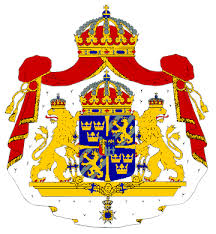
It is not known when and how the kingdom of Sweden was born, but the list of Swedish monarchs is drawn from the first kings known to have ruled both Svealand (Sweden) and Götaland (Gothia) as one province, beginning with Eric the Victorious. Sweden and Gothia were two separate nations long before that into antiquity. It is not known how long they existed: the epic poem Beowulf describes semi-legendary Swedish-Geatish wars in the 6th century. "Götaland" in this sense mainly includes the provinces of Östergötland (East Gothia) and Västergötland (West Gothia). The island of Gotland was disputed by other than Swedes, at this time (Danish, Hanseatic, and Gotland-domestic). Småland was at that time of little interest to anyone due to the deep pine forests, and only the city of Kalmar with its castle was of importance. The south-west parts of the Scandinavian peninsula consisted of three Danish provinces (Scania, Blekinge and Halland). North of Halland Denmark had a direct border to Norway and its province Bohuslän. But there were Swedish settlements in south-west Finland, and along the southern coastline of Norrland. During the early stages of the Scandinavian Viking Age, Ystad in Danish province Scania and Paviken on Gotland, were flourishing centres of trade, but they were not parts of the early Swedish Kingdom. Remains of what is believed to have been a large market dating from 600–700 AD have been found in Ystad. In Paviken, an important centre of trade in the Baltic region during the 9th and 10th century, remains have been found of a large Viking Age harbor with shipbuilding yards and handicraft industries. Between 800 and 1000, trade brought an abundance of silver to Gotland, and according to some scholars, the Gotlanders of this era hoarded more silver than the rest of the population of Scandinavia combined. St. Ansgar is usually credited with introducing Christianity in 829, but the new religion did not begin to fully replace paganism until the 12th century. During the 11th century, Christianity became the most prevalent religion, and from 1050 Sweden is counted as a Christian nation. The period between 1100 and 1400 was characterised by internal power struggles and competition among the Nordic kingdoms. In the years 1150-1293 according to the legend of Eric IX and the Eric Chronicles and Swedish kings made first, second and third crusade to pagan Finland against Finns, Tavastians and Karelians and started conflicts with the Rus with who no longer had any connection with Sweden. The Swedish colonisation of the coastal areas of Finland started at the same time in 12th and 13th century. In 14th century Swedish colonisation of coastal areas of Finland began to be more organised and in the end of the century several of the coastal areas of Finland were inhabitet mostly by Swedes. Except for the provinces of Scania, Blekinge and Halland, in the south-west of the Scandinavian peninsula which were parts of the Kingdom of Denmark during this time,feudalism never developed in Sweden as it did in the rest of Europe. The peasantry therefore remained largely a class of free farmers throughout most of Swedish history.Slavery (also called thralldom) was not common in Sweden, and what slavery there was tended to be driven out of existence by the spread of Christianity, the difficulty in obtaining slaves from the lands east of the Baltic Sea, and by the development of cities before the 16th century. Indeed, both slavery and serfdom were abolished altogether by a decree of King Magnus IV in 1335. Former slaves tended to be absorbed into the peasantry, and some became laborers in the towns. Still, Sweden remained a poor and economically backward country in which barter was the means of exchange. For instance, the farmers of the province of Dalsland would transport their butter to the mining districts of Sweden and exchange it there for iron, which they would then take to the coast and trade for fish, which they consumed, while the iron would be shipped abroad. A romantic nationalist interpretation of Valdemar IV taking control overGotland. The final battle outside the walls of Visby in 1361 ended with a massacre of 1,800 defenders of the city. In the middle of the 14th century, Sweden was struck by the Black Death. The population of Sweden and most of Europe was seriously decimated. And the population (at same territory) as existed by 1348 did not reach the same numbers again until the beginning of the 19th century. One third of the population died during 1349–1351. During this period, the Swedish cities began to acquire greater rights and were strongly influenced by German merchants of the Hanseatic League, active especially at Visby. In 1319, Sweden and Norway were united under King Magnus Eriksson, and in 1397 Queen Margaret I of Denmark effected the personal union of Sweden, Norway, and Denmark through the Kalmar Union. However, Margaret's successors, whose rule was also centred in Denmark, were unable to control the Swedish nobility. A large number of children inherited the Swedish crown over the course of the kingdom's existence; consequently real power was held for long periods by regents (notably those of the Sture family) chosen by the Swedish parliament. King Christian II of Denmark, who asserted his claim to Sweden by force of arms, ordered a massacre in 1520 of Swedish nobles in Stockholm. This came to be known as the "Stockholm blood bath" and stirred the Swedish nobility to new resistance and, on 6 June (now Sweden's national holiday) in 1523, they made Gustav Vasa their king. This is sometimes considered as the foundation of modern Sweden. Shortly afterwards he rejected Catholicism and led Sweden into the Protestant Reformation. The Hanseatic League had been officially formed at Lübeck on the Baltic coast of Northern Germany in 1356. The Hanseatic League sought civil and commercial privileges from the princes and royalty of the countries and cities along the coasts of the Baltic Sea. In exchange, they offered a certain amount of protection. Having their own navy, the Hansa were able to sweep the Baltic Sea free of pirates. The privileges obtained by the Hansa included assurances that only Hansa citizens would be allowed to trade from the ports where they were located. They sought agreement to be free of all customs and taxes. With these concessions, Lübeck merchants flocked to Stockholm, where they soon came to dominate the city's economic life and made the port city of Stockholm into the leading commercial and industrial city of Sweden. Under the Hanseatic trade, two-thirds of Stockholm's imports consisted of textiles and one-third of salt. The main exports from Sweden were iron and copper. However, the Swedes began to resent the monopoly trading position of the Hansa (mostly German citizens), and to resent the income they felt they lost to the Hansa. Consequently, when Gustav Vasa or Gustav I broke the monopoly power of the Hanseatic League he was regarded as a hero by the Swedish people. History now views Gustav I as the father of the modern Swedish nation. The foundations laid by Gustav would take time to develop. Furthermore, when Sweden did develop, freed itself from the Hanseatic League, and entered its golden era, the fact that the peasantry had traditionally been free meant that more of the economic benefits flowed back to them rather than going to a feudal landowning class.
Swedish Empire
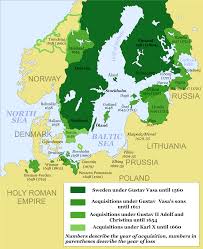
During the 17th century Sweden emerged as a European great power. Before the emergence of the Swedish Empire, Sweden was a poor and scarcely populated country on the fringe of European civilisation, with no significant power or reputation. Sweden rose to prominence on a continental scale during the tenure of king Gustavus Adolphus, seizing territories from Russia and Poland–Lithuania in multiple conflicts, including the Thirty Years' War. During the Thirty Years' War, Sweden conquered approximately half of the Holy Roman states. Gustav Adolphus planned to become the new Holy Roman Emperor, ruling over a united Scandinavia and the Holy Roman states, but he died at the Battle of Lützen in 1632. After the Battle of Nördlingen, Sweden's only significant military defeat of the war, pro-Swedish sentiment among the German states faded. These German provinces excluded themselves from Swedish power one by one, leaving Sweden with only a few northern German territories: Swedish Pomerania, Bremen-Verden and Wismar. In the middle of the 17th century Sweden was the third-largest country in Europe by land area, only surpassed by Russia and Spain. Sweden reached its largest territorial extent under the rule of Charles X after the treaty of Roskilde in 1658. The foundation of Sweden's success during this period is credited to Gustav I's major changes on the Swedish economy in the 16th century, and his introduction of Protestantism. In the 17th century, Sweden was engaged in many wars, for example with the Polish–Lithuanian Commonwealth, with both sides competing for territories of today's Baltic states, with the disastrous Battle of Kircholm being one of the highlights. One-third of the Finnish population died in the devastating famine that struck the country in 1696. Famine also hit Sweden, killing roughly 10{c2090c9030227a2294689599c4b4ea6d975b5fd47e202e24ab0e6b1a0c105272} of Sweden's population. The Swedes conducted a series of invasions into the Polish–Lithuanian Commonwealth, known as the Deluge. After more than half a century of almost constant warfare, the Swedish economy had deteriorated. It became the lifetime task of Charles' son, Charles XI, to rebuild the economy and refit the army. His legacy to his son, the coming ruler of Sweden, Charles XII, was one of the finest arsenals in the world, a large standing army and a great fleet. Sweden's largest threat at this time, Russia, had a larger army but was far behind in both equipment and training. Death of Gustav II Adolf at the Battle of Lützen. After the Battle of Narva in 1700, one of the first battles of the Great Northern War, the Russian army was so severely devastated that Sweden had an open chance to invade Russia. However, Charles did not pursue the Russian army, instead turning against Poland–Lithuania and defeating the Polish king, Augustus II, and his Saxon allies at the Battle of Klissow in 1702. This gave Russia time to rebuild and modernize its army. After the success of invading Poland, Charles decided to make an attempt at invading Russia, but this ended in a decisive Russian victory at the Battle of Poltava in 1709. After a long march exposed to Cossack raids, the Russian Tsar Peter the Great's scorched-earthtechniques and the extremely cold winter of 1709, the Swedes stood weakened with a shattered morale and were enormously outnumbered against the Russian army at Poltava. The defeat meant the beginning of the end for the Swedish Empire. In addition, the plague raging in East Central Europe devastated the Swedish dominions and reached Central Sweden in 1710. The Battle of Poltava in 1709. In the years following Poltava, Russia and her allies occupied all the Swedish dominions on the Baltic coast and even Finland. Charles XII attempted to invade Norway in 1716, but he was shot dead at Fredriksten fortress in 1718. The Swedes were not militarily defeated at Fredriksten, but the whole structure and organisation of the campaign fell apart with the king's death, and the army withdrew. Forced to cede large areas of land in the Treaty of Nystad in 1721, Sweden also lost its place as an empire and as the dominant state on the Baltic Sea. With Sweden's lost influence, Russia emerged as an empire and became one of Europe's dominant nations. As the war finally ended in 1721, Sweden had lost an estimated 200,000 men, 150,000 of those from the area of present-day Sweden and 50,000 from the Finnish part of Sweden. In the 18th century, Sweden did not have enough resources to maintain its territories outside Scandinavia, and most of them were lost, culminating with the loss in 1809 of eastern Sweden to Russia, which became the highly autonomous Grand Principality of Finland in Imperial Russia. In interest of re-establishing Swedish dominance in the Baltic Sea, Sweden allied itself against its traditional ally and benefactor, France, in the Napoleonic Wars. Sweden's role in the Battle of Leipzig gave it the authority to force Denmark–Norway, an ally of France, to cede Norway to the King of Sweden on 14 January 1814 in exchange for northern German provinces, at the Treaty of Kiel. The Norwegian attempts to keep their status as a sovereign state were rejected by the Swedish king, Charles XIII. He launched a military campaign against Norway on 27 July 1814, ending in the Convention of Moss, which forced Norway into a personal union with Sweden under the Swedish crown, which lasted until 1905. The 1814 campaign was the last time Sweden was at war. Illustration of starvation in northern Sweden, Famine of 1866–1868. There was a significant population increase during the 18th and 19th centuries, which the writer Esaias Tegnér in 1833 attributed to "the peace, the smallpox vaccine, and the potatoes". Between 1750 and 1850, the population in Sweden doubled. According to some scholars, mass emigration to America became the only way to prevent famine and rebellion; over 1{c2090c9030227a2294689599c4b4ea6d975b5fd47e202e24ab0e6b1a0c105272} of the population emigrated annually during the 1880s. Nevertheless, Sweden remained poor, retaining a nearly entirely agricultural economy even as Denmark and Western European countries began to industrialize. Swedish emigrants boarding ship in Gothenburg in 1905. Many looked towards America for a better life during this time. It is thought that between 1850 and 1910 more than one million Swedes moved to the United States. In the early 20th century, more Swedes lived in Chicago than in Gothenburg (Sweden's second largest city). Most Swedish immigrants moved to the Midwestern United States, with a large population in Minnesota, with a few others moving to other parts of the United States and Canada. Despite the slow rate of industrialization into the 19th century, many important changes were taking place in the agrarian economy due to constant innovations and a rapid population growth. These innovations included government-sponsored programmes of enclosure, aggressive exploitation of agricultural lands, and the introduction of new crops such as the potato. Because the Swedish peasantry had never been enserfed as elsewhere in Europe, the Swedish farming culture began to take on a critical role in Swedish politics, which has continued through modern times with modern Agrarian party (now called the Centre Party). Between 1870 and 1914, Sweden began developing the industrialized economy that exists today. Strong grassroots movements sprung up in Sweden during the latter half of the 19th century (trade unions, temperance groups, and independent religious groups), creating a strong foundation of democratic principles. In 1889 The Swedish Social Democratic Party was founded. These movements precipitated Sweden's migration into a modern parliamentary democracy, achieved by the time of World War I. As the Industrial Revolution progressed during the 20th century, people gradually moved into cities to work in factories and became involved in socialist unions. A communist revolution was avoided in 1917, following the re-introduction of parliamentarism, and the country was democratized.
World War I and World War II
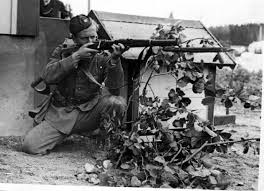
Sweden was officially neutral during World War I, although, under German pressure, they did take steps which were detrimental to the Allied powers including mining the Øresundchannel, thus closing it to Allied shipping, and allowing the Germans to use Swedish facilities and the Swedish cipher to transmit secret messages to their overseas embassies. Sweden also allowed volunteers fighting for the White Guards together with the Germans against the Reds and Russians in the Finnish Civil War, and briefly occupied the Aland islands in co-operation with Germany. As in the first world war, Sweden remained officially neutral during World War II, although its neutrality during World War II has been disputed. Sweden was under German influence for much of the war, as ties to the rest of the world were cut off through blockades. The Swedish government felt that it was in no position to openly contest Germany, and therefore made some concessions. Sweden also supplied steel and machined parts to Germany throughout the war. However, Sweden supported Norwegian resistance, and in 1943 helped rescue Danish Jews from deportation to Nazi concentration camps. The Swedish government also unofficially supported Finland in the Winter War and the Continuation War by allowing volunteers and materiel to be shipped to Finland. During the last year of the war, Sweden began to play a role in humanitarian efforts, and many refugees, among them several thousand Jews from Nazi-occupied Europe, were rescued thanks to the Swedish rescue missions to internment camps and partly because Sweden served as a haven for refugees, primarily from the Nordic countries and the Baltic states. The Swedish diplomat Raoul Wallenberg and his colleagues ensured the safety of tens of thousands of Hungarian Jews. Nevertheless, both Swedes and others have argued that Sweden could have done more to oppose the Nazis' war efforts, even if it meant increasing the risk of occupation.
Post-war era
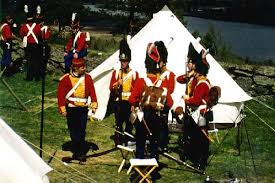
Prime Minister Tage Erlander (left) was Prime Minister under the ruling Swedish Social Democratic Party from 1946 to 1969. Sweden was officially a neutral country and remained outside NATO and Warsaw Pact membership during the Cold War, but privately Sweden's leadership had strong ties with the United States and other western governments. Following the war, Sweden took advantage of an intact industrial base, social stability and its natural resources to expand its industry to supply the rebuilding of Europe. Sweden received aid under the Marshall Plan and participated in the Organisation for Economic Co-operation and Development (OECD). During most of the post-war era, the country was governed by the Swedish Social Democratic Party largely in co-operation with trade unions and industry. The government actively pursued an internationally competitive manufacturing sector of primarily large corporations. Sweden was one of the founding states of the European Free Trade Area (EFTA). During the 1960s the EFTA countries were often referred to as the Outer Seven, as opposed to the Inner Six of the then-European Economic Community (EEC). Sweden, like countries around the globe, entered a period of economic decline and upheaval following the oil embargoes of 1973–74 and 1978–79. In the 1980s pillars of Swedish industry were massively restructured.[by whom?] Shipbuilding was discontinued, wood pulp was integrated into modernized paper production, the steel industry was concentrated and specialized, and mechanical engineering was robotized. Between 1970 and 1990 the overall tax burden rose by over 10{c2090c9030227a2294689599c4b4ea6d975b5fd47e202e24ab0e6b1a0c105272}, and the growth was low compared to other countries in Western Europe. Eventually government began to spend over half of the country's gross domestic product. Sweden GDP per capital ranking declined during this time.
Recent history

A bursting real estate bubble caused by inadequate controls on lending combined with an international recession and a policy switch from anti-unemployment policies to anti-inflationary policies resulted in a fiscal crisis in the early 1990s. Sweden's GDP declined by around 5{c2090c9030227a2294689599c4b4ea6d975b5fd47e202e24ab0e6b1a0c105272}. In 1992, a run on the currency caused the central bank to briefly increase interest rates to 500{c2090c9030227a2294689599c4b4ea6d975b5fd47e202e24ab0e6b1a0c105272}.. The response of the government was to cut spending and institute a multitude of reforms to improve Sweden's competitiveness, among them reducing the welfare state and privatizing public services and goods. Much of the political establishment promoted EU membership, and a referendum passed with 52.3{c2090c9030227a2294689599c4b4ea6d975b5fd47e202e24ab0e6b1a0c105272} in favor of joining the EU on 13 November 1994. Sweden joined the European Union on 1 January 1995. In a 2003 referendum the Swedish electorate voted against the country joining the Euro currency. In 2006 Sweden got its first majority government for decades as the center-right Alliance defeated the incumbent Social Democrat government. Following the rapid growth of anti-immigration Sweden Democrats and their entrance to the Riksdag in 2010 the Alliance became a minority cabinet. Sweden remains non-aligned militarily, although it participates in some joint military exercises with NATO and some other countries, in addition to extensive co-operation with other European countries in the area of defense technology and defense industry. Among others, Swedish companies export weapons that were used by the American military in Iraq. Sweden also has a long history of participating in international military operations, including most recently, Afghanistan, where Swedish troops are under NATO command, and in EU sponsored peacekeeping operations in Kosovo, Bosnia and Herzegovina, and Cyprus. Sweden also participated in enforcing a UN mandated no-fly zone over Libya during the Arab Spring. Sweden held the chair of the European Union from 1 July to 31 December 2009. In recent decades Sweden has become a more culturally diverse nation due to significant immigration; in 2013 it was estimated that 15 per cent of the population was foreign-born, and an additional 5 per cent of the population were born to two immigrant parents. The influx of immigrants has brought new social challenges. Violent incidents have periodically occurred including the 2013 Stockholm riots which broke out following the police shooting of an elderly Portuguese immigrant. In response to these violent events, the anti-immigration opposition party, the Swedish Democrats, promoted their anti-immigration policies, while the left-wing opposition blamed growing inequality caused by the centre-right government's socioeconomic policies. In 2014 Stefan Löfven won the General Election and became the new Swedish Prime Minister. The Sweden Democrats held the balance of power and voted the government's budget down in the Riksdag, but due to agreements between the government and the Alliance, the government was able to hang onto power. Sweden was heavily affected by the 2015 European migrant crisis, forcing the government to tighten regulations of entry to the country, as Sweden received thousands of asylum seekers per week during the autumn, overwhelming existing structures.













